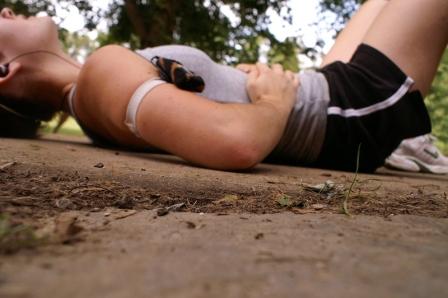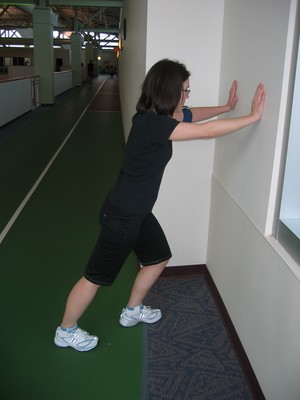Side Stitch from Running
Wednesday, September 30th, 2009Everyone has encountered it before while running, the dreaded side stitch. I remember my first side stitch. It was the first pain I ever felt when running. I was running around a track at the age of 5 and remember thinking, ‘Why was my body feeling this way?’ Well, apparently my 5 year old mind wasn’t the only brain that couldn’t figure out what this side stitch was and why it occurred. Scientist and doctors still debate the exact cause of the side stitch, but there are some agreed upon possible causes. We at SeriousRunning.com and the community of runners will figure it out.
Side stitch, or often referred to as ETAP (exercise related transient abdominal pain), are an intense stabbing pain under the lower edge of the ribcage. It may be caused by internal organs, like the liver and stomach, pulling down on the diaphragm as you bounce up and down while running. This makes sense because runners are constantly bouncing up and down. However, a more agreed upon theory, is that side stitches may be caused by the contraction of the liver or spleen, which squeezes extra oxygen-carrying red blood cells, leaving this area of the body without the proper amount of oxygen. This is why many runners get side stitches when they are having more than usual difficulty breathing.
When you feel the side stitch, keep running. Slow down a bit to a jog and concentrate on your breathing. Take deep breathes in the belly (medical term) first to get the oxygen pumping in your blood again. Then start taking shallow breathes, pushing as much oxygen into your blood as quickly as possible to get it moving in your side again. Then start running again.
Runners typically get the side stitch on their right side because that is the side of the body that their large liver is on. Your liver enlarges, squeezing the extra oxygen-carrying red blood cells, causing you to get a stitch. One way to try to avoid this is to concentrate on breathing when you strike your right foot on the ground instead of your left foot. This will allow more oxygen go to the ailing side of your body.
In order to avoid side stitches before you even start running, strengthen your core muscles like you abdonimals, lower back, and obliques. Stretching before your run helps too. Raise your hand above your head and lean to one side stretching out your side muscles like you are on an 80s aerobics video. Add a head band and ankle scrunchies to get a full stretch. Also it is important to eat properly; try to avoid eating 2 hours prior to working out. Eating just before running can give you cramps that may put more strain on your oxygen flow. An old wife’s tale that has worked for me is to avoid carbonated beverages. I used to not drink any carbonated beverages while in track and cross-country season; but that is tough now that beer and I have become acquainted. This theory makes sense because carbonated beverages make it more difficult for oxygen to move in your blood stream which is the cause of side stitches. It worked for me, I never got side stitches during the season. Plus I had a cool red mustache from drinking so much Hawaiin Punch!
So don’t let a side stitch slow you down. Do these things to avoid getting them in the first place and keep on a runnin’.




